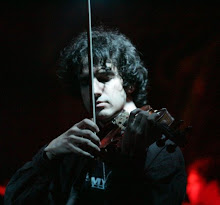
The Pierpont Morgan Library NY
An intriguing show at the Metropolitan Museum of Art in New York may require art history to be rewritten
People have been drawing since they lived in caves, if not before. But in the Western world, drawing as an art is said to have started with the Renaissance. An exhibition, “Pen and Parchment”, at the Metropolitan Museum reveals how incorrect that assumption is. The show, open until August 23rd, is hung with more than 50 finely detailed, beautifully observed and executed medieval drawings, all created between the ninth and 14th centuries.
Although some of these drawings were clearly intended to become paintings (and must therefore be considered unfinished), many were done as complete works of art in themselves. A few stand alone, among them sketches on scraps of parchment, but most are bound into texts with which they have an intricate relationship, literal and metaphorical. Almost all these treasured works are housed in university and monastery libraries where they are seldom seen by outsiders. For these reasons the show, the first of its kind, is a revelation.
The Middle Ages started around 500AD and lasted for 1,000 years. The period had no Giorgio Vasari, the Renaissance artist who publicised the magnificent achievements of his contemporaries; his book, “The Lives of the Artists”, is still widely read. But medieval draftsmen have now gained a passionate champion in Melanie Holcomb, the exhibition’s lead curator. Loans have come from world capitals and from remote monasteries, such as Einsiedeln in Switzerland. The names of most of the artists remain unknown but their work will be seen by tens of thousands.
The drawings, which include a superb design by a 13th-century architect for the façade of Strasbourg cathedral, anatomical diagrams, imaginative astrological compilations, complex battle scenes, saints and lovers as well as sketches of foreign flora, are arranged thematically and chronologically. The main segments are labelled: “Early Medieval Masterpieces”, “Scholarship and Science” and “Tools and Materials”.
The show opens with the early ninth-century Corbie Psalter from France. Ms Holcomb had intended to start with the fifth-century “Corpus Agrimensorum Romanorum”, an illustrated volume about land surveying. However, the Herzog-August Bibliothek in Wolfenbüttel, Germany, (like others holding very early medieval works) would not lend it. This was a disappointment, but the lavishly illustrated Corbie Psalter is the curator’s favourite book. It is, she says, “the first evidence of someone realising the potential of drawing, of what a line can achieve.” Every psalm and canticle began with an illustrated initial, 156 of which survive. Through them swirl drawn images of monks (the book’s intended readers) as well as birds, biblical figures and fantastical creatures.
Next to it stands another French work, the Four Gospels, produced later in the same century. It displays an arresting, monochrome portrait of the Evangelist Luke, filling almost the whole page (see above). An endearing, small winged ox (Luke’s symbol) watches from his perch on a curtain rod as Luke writes his text. Both have gold haloes.
The period’s chief masterpiece, the Utrecht Psalter, produced in 830, is represented by a photograph (it rarely leaves the Netherlands and never crosses an ocean). Its 166 often complex ink drawings illustrate passages in the psalms; it is open at a page crowded with images telling the story of Psalm 11. This influential book had arrived in England by 1000, and within a century had become the model for the spectacular Harley Psalter, which has pride of place in the centre of the room. It is the first time that the British Museum has let it travel to America. Its vivacious coloured line drawings were created by eight draftsmen over a period of 100 years.
Two named artists appear near the end of the exhibition. A 13th-century English writer and draftsman, Matthew Paris, is represented by compelling close-up, tinted portrayals of the Virgin and Christ. They are at once familiar and alien, a bridge between his time and our own. Not so a drawing by Opicinus de Canistris. Although created 100 years later, the bridge is gone. It is a large drawing of a body, with a vertical array of smaller men inside it. The catalogue calls it an attempt at self-understanding; viewers may find it stubbornly obscure. Yet in another way it is boldly explicit. The parchment, which has never been cut or smoothed, retains the outline of a sheep, the impression of its spinal column still visible.
Light levels are low to avoid damaging the drawings. Only three lenders allowed museum staff to open cases and turn pages once a month. The others presumably felt that the risk of tearing or smudges from oily, humid hands (albeit gloved) was an even greater worry than exposing a single precious page to continuous light.

Nenhum comentário:
Postar um comentário